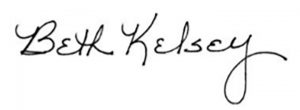Dear Colleagues,
As 2021 comes to an end, let us consider the work we have done to foster inclusivity, diversity, and equity in journal content and through our authors and editorial advisory board (EAB). To begin, our journal mission statement now reflects this commitment:
“Women’s Healthcare, the official journal of the National Association of Nurse Practitioners in Women’s Health, delivers timely, relevant, evidence-based information to nurse practitioners and other advanced practice registered nurses who provide women’s and gender-related healthcare. The journal’s focus on clinical practice, professional issues, and policy supports readers in providing the highest quality patient care and enhancing their professional development. The journal fosters inclusivity, diversity, and equity through its content, authors, and editorial advisory board members.”
In December 2020, we put out a call for manuscripts on diversity, inclusion, structural racism, and implicit bias, resulting in these relevant articles in 2021:
“Mental illness stigma: strategies to address a barrier to care” reviews the stigma of mental illness, a major barrier to recovery, discussing tools to measure stigma and intervention strategies to decrease it among healthcare professionals and individuals suffering from mental illness. “Navigating biases against Asian Americans during Covid-19” explores political influences in the rise of anti-Asian rhetoric, shares experiences of the Asian American Pacific Islander community during this time, and offers strategies for reducing anti-Asian discrimination. “We are the solution to our problem: a brief review of the history of racism and nursing” examines historic and current structural racism in the nursing profession, offering a way forward to lead systemic change, advancing health equity and addressing health disparities as their root cause. “Trauma-informed care. Part 2: transgender and gender nonconforming individuals” discusses a blueprint for planning and implementing trauma-informed care for transgender and gender nonconforming individuals to meet the medical and mental health needs of this underserved and vulnerable population. “Examining an implicit bias assessment tool: considerations for faculty and clinicians” focuses on the impact of implicit bias, describes the Implicit Association Test used to examine it and the reliability and validity of this assessment tool, proposes considerations for using the test in an educational setting, and discusses future implications in examining implicit bias. Finally, “What is sexual and reproductive health equity and why does it matter for nurse practitioners?” describes sexual and reproductive health (SRH) equity and how nurse practitioners can apply this framework to improve research, policy, and clinical practice. This includes ensuring that individuals across age, gender, race, and other intersectional identities have what they need to attain their highest level of SRH.
With a robust response to the call for applications, we increased the diversity of our EAB members with new appointments this year. But important work remains ahead to demonstrate our commitment to fostering inclusivity, diversity, and equity.
We will continue our call for manuscripts focused on diversity, inclusion, structural racism, and implicit bias. We are reaching out to leaders from the National Coalition of Minority Ethnic Nurse Associations to explore collaborations that will encourage their members who are women’s health nurse practitioners or advanced practice registered nurses with a focus on women’s and gender-related healthcare to submit manuscripts, apply to be peer reviewers and for consideration as EAB members, and join NPWH if they have not done so already.
Our commitment to continuing to increase diversity in our EAB members is reflected in our call for applications for 2022 that has brought an abundance of them. When we have new members in place, we will share with you their qualifications and those of our continuing EAB members.
We recognize a need to be able to identify current peer reviewers and recruit additional ones who represent diversity. The goal is to have specific peer reviewers able to identify bias and/or lack of attention to racism and other forms of oppression particularly when there is a focus on health disparities or inequities and to provide constructive guidance to authors for related revision of their work. Current peer reviewers have been asked to voluntarily share any diversity they represent that can help us with this goal. Given this information, we will send out a call for peer reviewer applications to expand our diversity in areas of identified need.
Our EAB will meet in early 2022, with a focus on strategies to continue strengthening the presence of diversity in contributing authors, peer reviewers, and in content addressing issues of structural racism and bias, other areas of oppression, and approaches to improve women’s and gender-related health through attention to inclusivity and equity. As the official journal of NPWH, we collaborate with its leadership to increase inclusivity, diversity, and equity in the organization, WHNP profession, women’s and gender-related healthcare field, and beyond.

Beth Kelsey, EdD, APRN, WHNP-BC, FAANP

